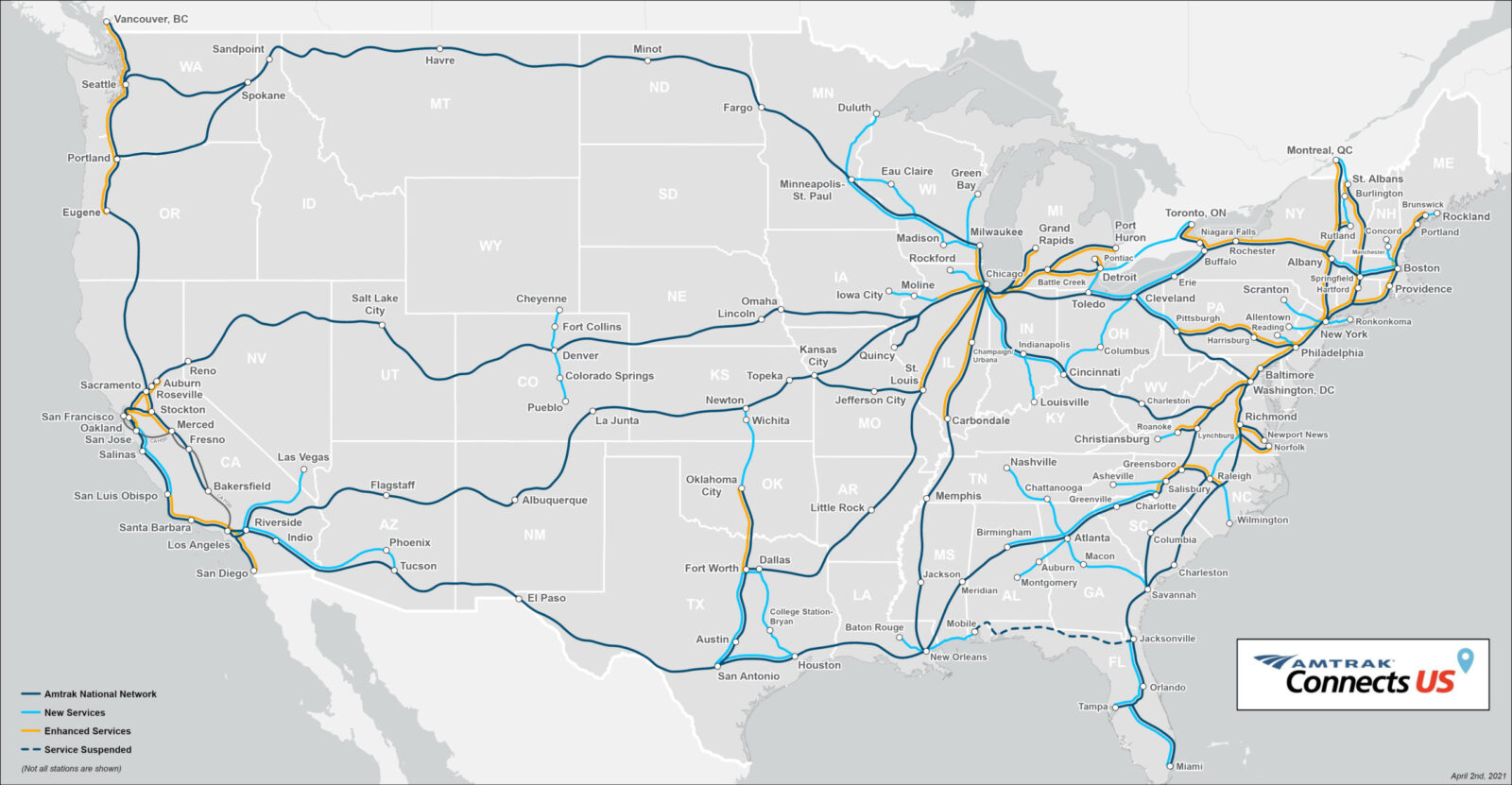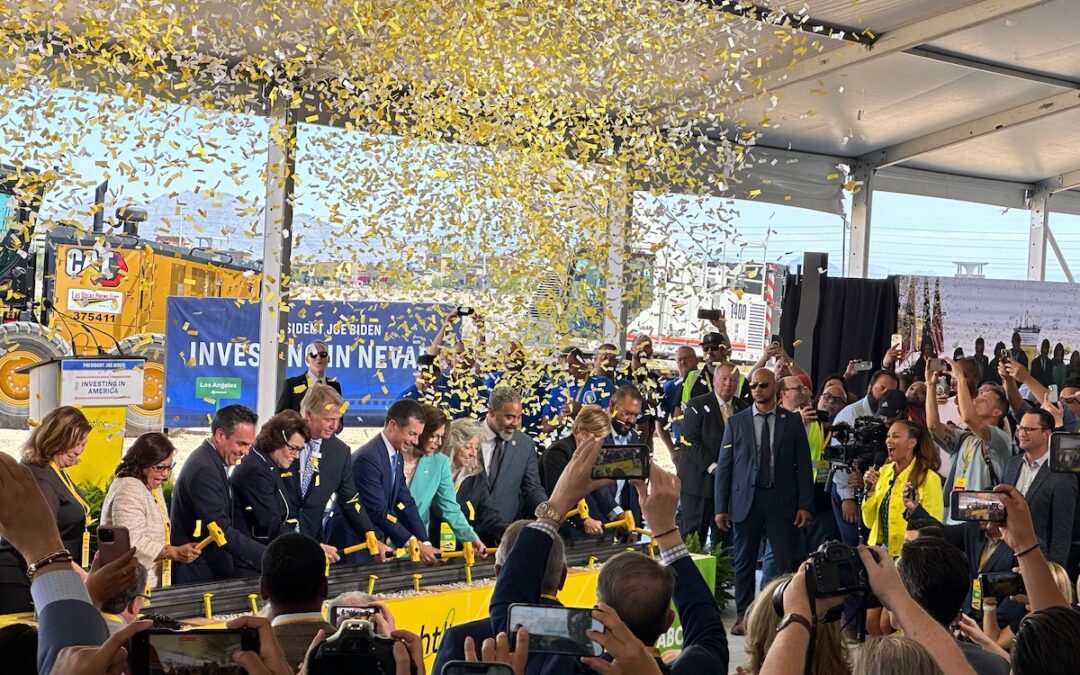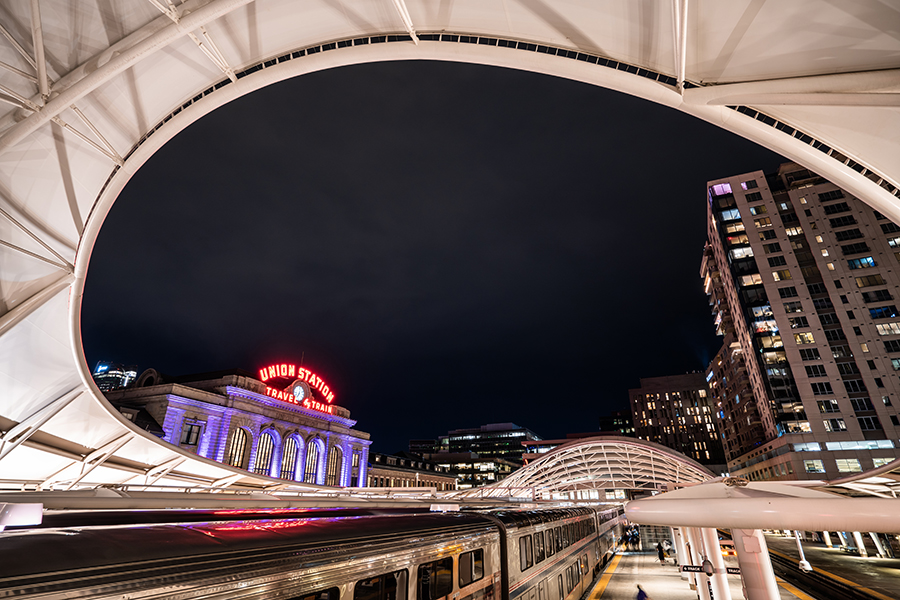The railroad Brightline today broke ground in Nevada on its new Brightline West project. Brightline will use trains traveling up to 200 miles per hour to cut the travel time between Las Vegas and Los Angeles in half. The company already operates successful trains...
The hit job on Amtrak by Politico this week—aptly titled “Trainwreck”—contains several sleights of hand.
Michael Grunwald writes that Amtrak’s newly released vision for expanding its network is foolish, since many of the proposed new lines are trains to nowhere. He cites as one example Rockford, Illinois, which sounds like some backwater town if you know nothing about the state. In fact, Rockford is the fifth largest city in Illinois, with a population of more than 150,000 people and a strong aerospace sector. It’s about 100 miles west of Chicago. In other words, it’s a two-hour drive through heavy congestion. Well-timed trains between the cities would serve tens of thousands of commuters in suburban Chicago.
If that line doesn’t make sense, no rail line does.
Grunwald also singles out for mockery a proposed line from Oklahoma City to Newton, Kansas (pop. 19,000), which indeed seems ludicrous until you actually look at Amtrak’s map. The proposed new line is from Oklahoma City to Wichita (pop. 390,000). It continues on 30 miles north, to Newton, because a major east-west Amtrak line already runs through the town.
These kinds of deceptions are bad enough. What’s more damaging are the false and lazy premises borrowed from boilerplate narratives about Amtrak. There are at least two.
The first is that, since most of Amtrak’s routes outside of the Northeast Corridor (NEC) suck, they don’t deserve more funding and certainly shouldn’t be expanded. Instead, we need to focus on the few lines that are working relatively well—the NEC and a few other high-volume routes—and give up on the rest.
There’s a Catch-22 logic in this premise that creates a death spiral of dysfunction. A service underperforms because it’s under-funded. Then it’s demonized and defunded because it underperforms.
The truth is that we have no idea how frequent, first-rate Amtrak service would be received in the U.S. We’ve never made the commitment or the investments to find out.
It’s important to be clear just how tiny the funding for rail in President Biden’s infrastructure plan is, relative to our actual priorities—airports and roads. Biden’s $80 billion boost to rail investments—over a decade—is portrayed as momentous. It is, in some ways. But only because the bar is so stunningly low. Consider that Chicago alone is now spending more than $8 billion to upgrade O’Hare Airport. Or that, in 2017, the U.S. spent $181 billion on roads and highways.
Greenwald’s second false premise is that dumping massive amounts of money into airports and roads is just the way things are and must be. He doesn’t say it so explicitly, of course. But if Amtrak—the extremely limited alternative to the status quo—needs to scale back its ambitions, what’s left to invest in? More roads, more airports, and a few high-profile rail lines.
This is the premise behind much of what’s written about U.S. transportation. It drives the assumption that every tiny town from coast to coast should be served by a multi-lane highway—while a new rail line through a dense population corridor in Illinois is mocked as wasteful spending.
It’s why habitual bailouts of the car companies and airlines—costing taxpayers hundreds of billions of dollars—are almost never cited as reasons to cut spending on roads and airports. Yet Amtrak “mismanagement” comes up again and again in the case against trains.
These two premises—that Amtrak service isn’t worth expanding, and that the status quo is the only option—are useful to critics of rail because they justify our transportation paralysis. Maybe it’s true that our roads are deadly and congested; that flying is a headache and enormously inefficient, especially for trips under 500 miles; and that both are environmental disasters. But what’s the alternative? What else can we possibly do?
Well, maybe we could try thinking harder and more seriously about the possibilities.
One certainty is that connections matter deeply to the health and vitality of our economy. Think of the way the much-maligned U.S. Post Office was fundamental to the origins and explosive growth of high-tech companies like Amazon and Netflix. It took more than just streaming and the web to make their business models work. It took the good old-fashioned mail system, putting packages in mailboxes in every community in the country.
We also know, as Grunwald notes, that Amtrak’s ridership reached a record high in 2019, before cratering during the pandemic. There’s proven demand for its service.
And we know that the transportation sector is the single largest source of U.S. greenhouse gas emissions. Getting serious about engaging the fight against climate change will mean fundamentally changing the way we move around. And no—electric cars won’t save us. The batteries are an environmental menace to produce.
Trains, meantime, are about three times more energy efficient than cars, accounting for average occupancy rates. And new, electrified trains running on renewable energy are dramatically more energy efficient than the diesel engines still widely used across the U.S.
What does all of that add up to?
We’ll find out soon. But it’s a safe bet that criticizing Amtrak for its ambitions to expand is part of the problem, not the solution. The false premises that drive the criticism and mockery are a road to nowhere.
The Latest from HSRA
Our Latest Blog Posts
Check out the latest news, updates, and high speed rail insights from our blog!




